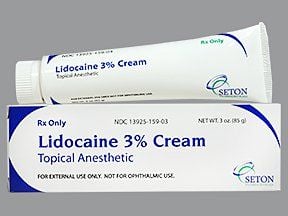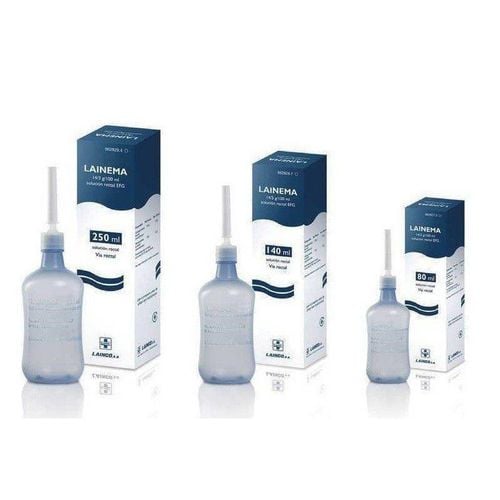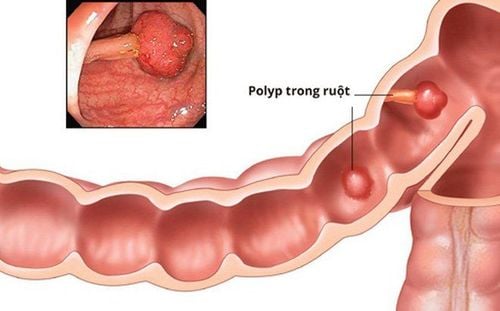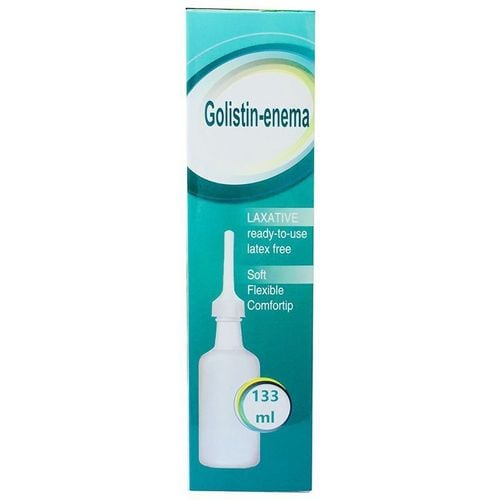This is an automatically translated article.
Post by Master, Doctor Mai Vien Phuong - Department of Examination & Internal Medicine - Vinmec Central Park International General Hospital
Idiopathic Mesenteric Atherosclerosis (IMP) is a rare entity that occurs almost exclusively in Asian populations and is characterized by calcification of the mesenteric veins and thickening of the wall of the mesenteric veins. right half of the colon. Long-term and frequent ingestion of biochemicals and toxins is thought to be associated with IMP.
The herbal ingredients present in the patients were compared to identify the toxic agent as a possible causative factor, and the positive correlation of the computed tomography disease score and the drinkability index was found. discover. Furthermore, pre-existing disease (eg, diabetes, chronic nephritis, or malignancy) may be risk factors for idiopathic mesenteric atherosclerosis.
1. What is Spontaneous Mesenteric Atherosclerosis?
Idiopathic mesenteric atherosclerotic disease, also known as occlusive colitis, is a rare intestinal ischemic syndrome of gradual onset and progression. It is characterized by thickening of the wall of the right hemicolon and calcification of the mesenteric veins. Most cases have been reported in East Asian countries and regions, especially Japan and Taiwan. In 1991, Koyama et al made the initial description of this disease. To distinguish this disease from ischemic colitis associated with arterial disease, it was termed “phlebosclerotic colitis” by Yao et al. in 2000. In 2003, Iwashita et al. supported the term "idiopathic mesenteric atheroma", as the affected site of this disease shows weak inflammatory changes. Most intestinal ischemic diseases are caused by inadequate arterial supply due to atherosclerosis, thrombosis, and embolism. Disturbed venous return can also cause colitis, including idiopathic mesenteric atherosclerotic disease as described here; idiopathic mesenteric atherosclerotic disease is often attributed to ischemia. Chronic set of colon due to calcification of the mesenteric venous system causes venous obstruction of the colon and even hemorrhagic infarction.
Clinical symptoms
The incidence is low, mainly chronic and with insidious onset. Patients with idiopathic mesenteric atherosclerotic disease often present with nonspecific symptoms (eg, abdominal pain, diarrhea, nausea, and vomiting). Since the disease mainly involves the right colon, abdominal pain usually occurs in the lower right abdomen. Patients may be asymptomatic in the early stages of the disease but may develop intestinal obstruction and even perforation in the advanced stages of the disease. In this study, most of the 8 patients had abdominal pain and diarrhea. One person presented with intestinal obstruction as the first symptom, and another presented with gastrointestinal bleeding, which is essentially consistent with existing reports. Pathogenesis and Etiology The pathogenesis and etiology of idiopathic mesenteric atherosclerosis remains unclear. Spontaneous mesenteric atherosclerosis is characterized by a defined region and the distribution of the endemic population, and the relationship to region-specific lifestyle emphasizes the etiology of this disease. Long-term and regular ingestion of biochemicals and toxins is considered to be associated with the disease. Most of the reported cases of idiopathic mesenteric atherosclerotic disease are associated with the use of herbal medicines and tinctures, most of which contain gardenia fruit. \
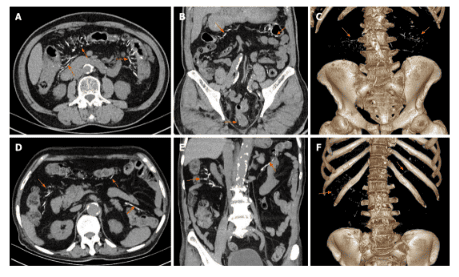
2. Spruce fruit
Gardenia is the dried ripe fruit of the Gardenia jasminoides Ellis tree. It is a common crude medicine used as a Chinese herb and has been widely used to treat cardiovascular diseases, cerebrovascular diseases, hepatobiliary diseases and diabetes. The main active ingredient of the gardenia fruit is the bactericidal geniposide. According to the inference of some scholars, if a patient takes a Chinese herbal medicine containing Gardenia for a long time, geniposide may be hydrolyzed by bacteria in the intestinal tract to genipin, and the absorbed genipin will react with protein in the mesenteric vein plasma. In addition, collagen gradually accumulates submucosal, which then progresses to venous hyperplastic myointima, accompanied by fibrosis/scleroderma. These changes eventually lead to venous occlusion. Since geniposide refers to a type of glycoside, oral geniposide is not directly absorbed after reaching the lower gastrointestinal tract. Geniposide is only hydrolyzed after entering the cecum and ascending colon, and then converted to its metabolite, genipin, which is permeable to the enterocytes by many bacteria in the colon. The process of transformation and absorption has largely been identified in the right and transverse colon, which explains the characteristic lesion site of mesenteric scleroderma.

3.Studies on how geniposide affects the human body
In Japan and Taiwan, herbal prescriptions containing geniposide are commonly used and found to be effective for female-specific symptoms, which may be predominate in females. However, most of the patients in the other authors' study had a history of consuming medicinal alcohol with steeping of the fruits for a long time, and it is possible that the male predominance. Thus, region-specific lifestyles may contribute to the understanding of the etiology of this disease. In a study in China, 7 patients had a history of drinking Chinese medical liquors called Wu chia-pe and Wanying wisteria, which consisted of various Chinese herbs steeped in alcohol and various effects (e.g. increased fitness and optimized immune response). Another patient had no history of alcohol consumption and had been using Biyuanshu oral liquid for a long time to treat chronic rhinitis. The medical fluids used by the authors' eight patients all contained geniposide, chuan xiong and angelia dahurica.
A study by Hiramatsu et al of 25 patients with idiopathic mesenteric atherosclerotic disease in which geniposide was the only Chinese drug common to all is further evidence that Chinese herbal medicines have containing geniposide has been implicated in the pathology of idiopathic mesenteric atherosclerosis. However, whether genocide is only a factor directly related to the pathogenesis of idiopathic mesenteric atherosclerosis, or whether it co-exists with other Chinese drugs in the pathogenesis of atherosclerosis. mesenteric spondylolisthesis or not, needs to be further determined in larger data sets. Diagnosis by imaging The clinical symptoms of idiopathic mesenteric atherosclerosis lack specificity, and the diagnosis is largely confirmed by radiographic findings and colonoscopy. Abdominal CT scan shows calcification of the involved superior mesenteric vein and its branches, which are linear and vascular in flow. The wall of the colon involved becomes swollen and thickened. Endoscopy reveals blue or cyanotic mucosa at the site of injury, and the coloration may be attributed to chronic obstruction with ischemia or toxin discoloring the intestinal mucosa. Submucosal irregular and tangled veins can be seen with poor light transmission. In severe cases, the vessels may disappear. Congestive colonic mucosa and colonic edema are sometimes accompanied by erosion or ulceration. Ongoing lesions and chronic disease process include spread from the ileum to the anus. Spontaneous mesenteric atherosclerotic disease primarily affects the right colon but can also involve the left colon and extends to the sigmoid colon, but generally does not involve the terminal ileum.

Please dial HOTLINE for more information or register for an appointment HERE. Download MyVinmec app to make appointments faster and to manage your bookings easily.
References Wen Y, Chen YW, Meng AH, Zhao M, Fang SH, Ma YQ. Spontaneous mesenteric atherosclerosis associated with long-term oral administration of geniposide. World J Gastroenterol 2021; 27 (22): 3097-3108 [DOI: 10.3748 / wjg.v27.i22.3097 ]




